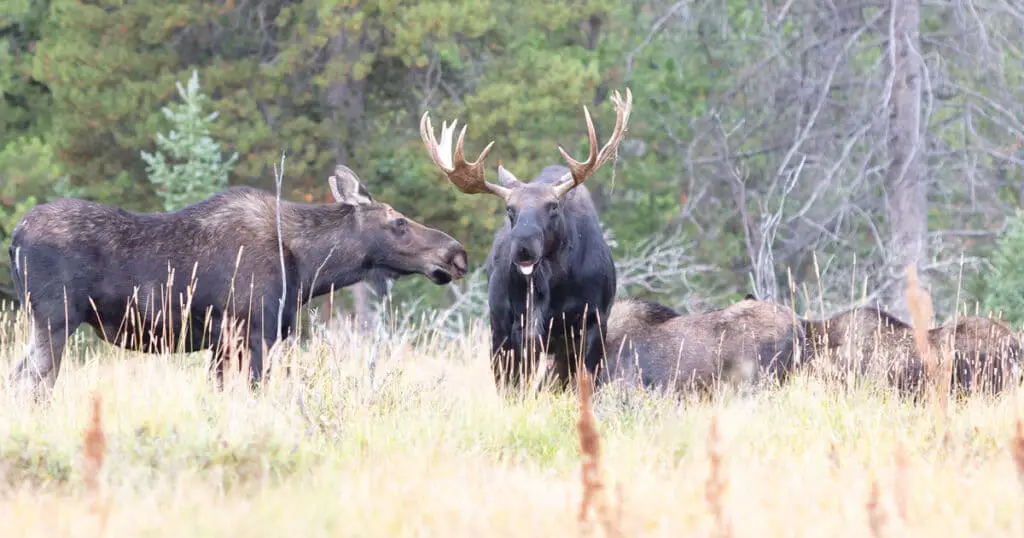The moose is a North American icon. They’re practically synonymous with northern parts of Canada, as well as Alaska and even Maine. These aren’t the only states where moose can be found. Moose aren’t found all over the United States. This is because a cold climate is necessary for the moose’s habitat. Keep reading to learn about moose population by state.
Here you’ll find out which state has the most moose in the United States. Below is an overview of this guide to moose population in the United States:
- Are there moose in all 50 states?
- Which state has the most moose?
- Ranking moose population by state
- Which state has the biggest moose?
- Best moose hunting states
- Moose population history in the United States
Are There Moose in All 50 States?
No, there aren’t moose in all 50 states. In fact, most states don’t have any moose whatsoever.
This is because moose prefer cold, wet climates.
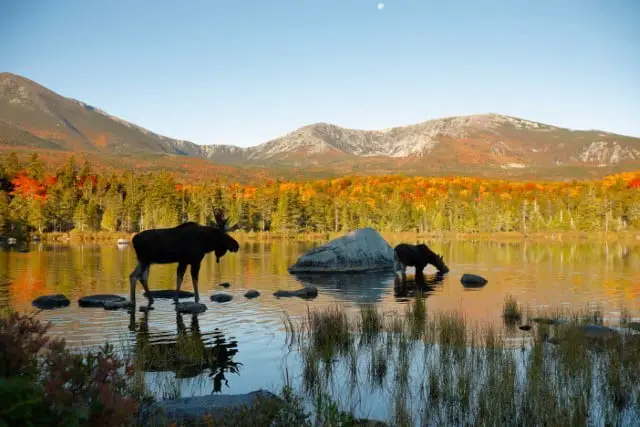
Moose are well-adapted to live in places like Alaska and Maine. They have thick layers of skin and heavy fur.
This fur becomes heavier in the winter months. They will shed most of their coat during the spring and summer.
Which State has the Most Moose?
The largest moose population is outside of the United States. It’s in Canada.
It isn’t very surprising that Alaska is the state with the highest moose population.
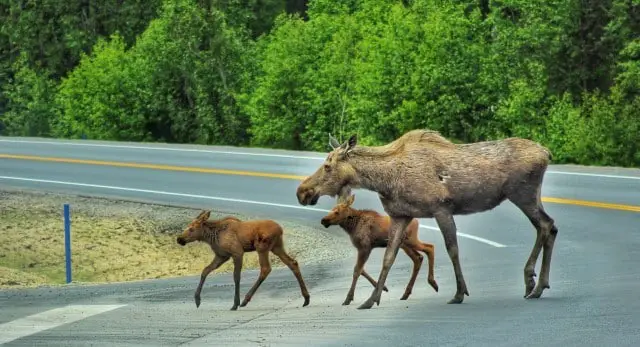
In the lower 48 states, Maine has the highest moose population. Other states with significant moose populations are Idaho, New Hampshire, and Massachusetts. Many states in New England have moose.
Most of the states in New England are relatively small compared with Alaska or Maine, so it isn’t surprising that they don’t have significant population numbers.
Alaska, Maine, and Canada have a relatively low human population density. This means that people are relatively spread out.
There are fewer urban areas that threaten moose habitats.
Canada and Alaska have lots of protected areas for moose and other animals. These factors all contribute to the large moose population in these areas.
Even so, the moose’s habitat is threatened by climate change.
Here is a list of the states with the largest moose populations.
Ranking Moose Population by State
| Moose Population (ranking) | State |
|---|---|
| 1. | Alaska |
| 2. | Maine |
| 3. | Idaho |
| 4. | New Hampshire |
| 5. | Massachusetts |
| 6. | Vermont |
| 7. | Minnesota |
Which State has the Biggest Moose?
In terms of population, Alaska blows it out of the park. This isn’t surprising given the state’s size.
It’s also not surprising that Alaska has the largest moose. After all, this state is the perfect moose habitat.
Moose are solitary creatures and like quiet places. Since Alaska is so big and has a relatively small population, it’s the perfect place for moose.
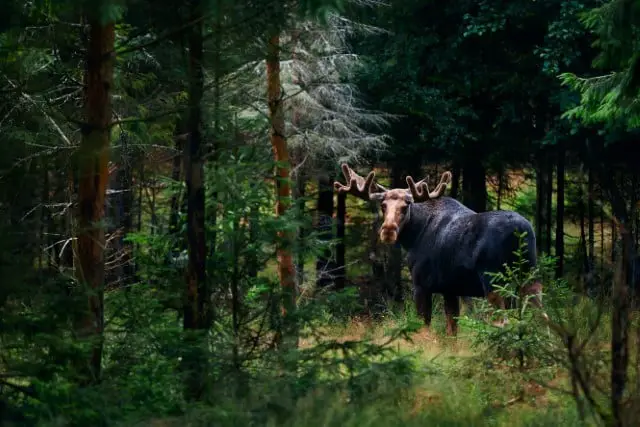
Alaska also has a significant number of national parks and rainforests.
Obviously, Alaskan rainforests certainly aren’t tropical and don’t have as many different species as the Amazon. However, like all rainforests, they have plenty of vegetation. This means a lot of food sources for moose.
A moose with more access to food will get bigger. And an Alaskan rainforest is like an all-you-can-eat buffet for a moose!
The North American moose is the largest species of deer in the entire world. Moose can be over seven feet tall at the shoulder, which is more than a foot higher than the next largest deer species, the North American elk.
You can read our full comparison between moose and elk to learn more.
Alaskan moose are considered a moose subspecies. On average, these moose are significantly larger than other moose.
Best Moose Hunting States
Alaska is by far the best state for moose hunting. There are more moose here than in any other state.
The problem is that Alaska is rather difficult to get to. Once you’re there, it’s also not too easy to get around.
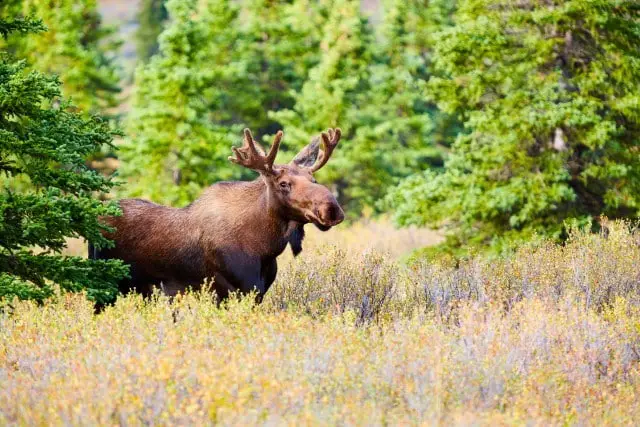
Alaska is extremely rugged. If you’re not an experienced hunter and have never lived in a cold climate, it’s better to start in a place like Maine if you want to try moose hunting.
Maine is much easier to reach from other states. It has the second largest moose population.
Moose hunting is much less popular than whitetail deer hunting, so you don’t have as much hunting competition in Maine as you do in other areas of the country. However, hunting moose is different and has special challenges.
Moose behave very differently than other deer species. They can be aggressive and even dangerous.
Moose Population History in the US
Around 1900, there was a significant decline in moose and deer populations across the United States. The moose population in the United States steadily increased throughout most of the 20th century.
For periods earlier than 1900, moose population records either don’t exist or are unreliable. However, records suggest that the North American deer population started to decline steadily when Europeans arrived.
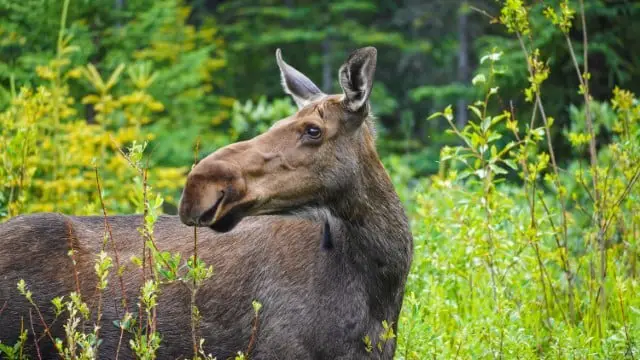
As the human population began to steadily increase, rural areas were developed. This negatively impacted moose habitats.
As moose tend to live in especially remote and rugged areas, their population wasn’t as heavily affected as other deer species. However, by 1900, the population was at a dangerously low level.
Wildlife conservation efforts since then have improved the situation, causing populations to rebound.
Moose are very sensitive to changes in temperature.
Higher temperatures and climate change negatively affect moose and their habitats.
Final Thoughts On Moose Population by State
To sum things up, moose are found in cold, northern climates. In Europe and Asia, they live in Scandinavia and Russia. In North America, they are found in areas like Canada and Alaska.
Alaska has the highest moose population of any state. Maine has the next largest population of moose. Moose cannot live in warmer climates and climate change is currently threatening their habitats.

